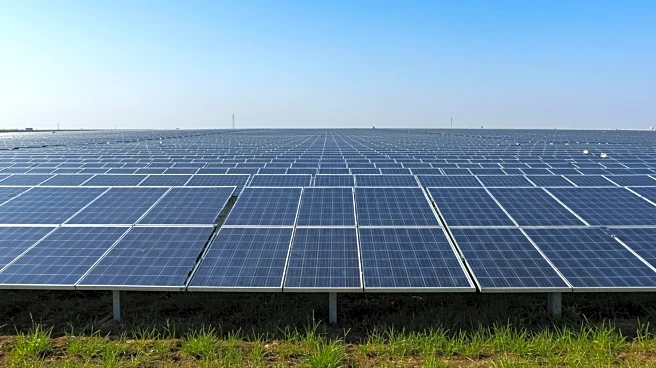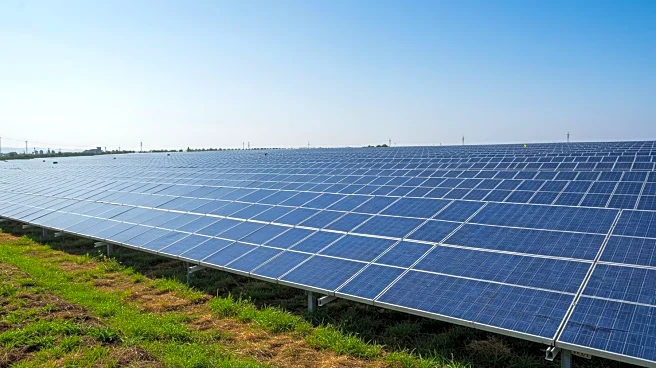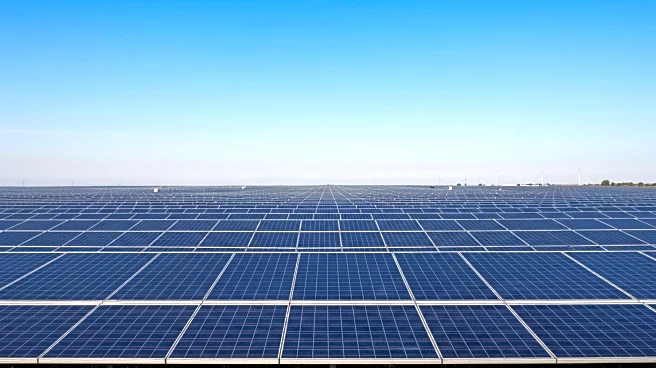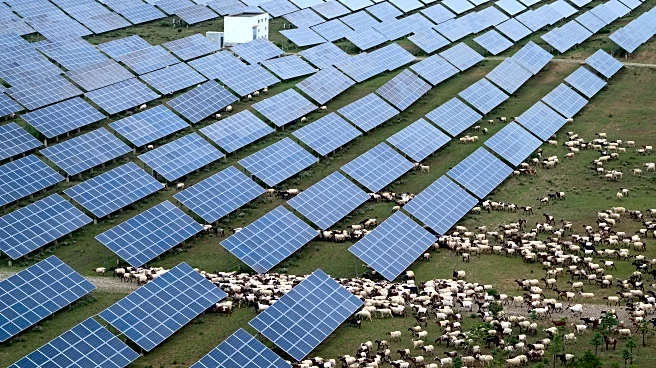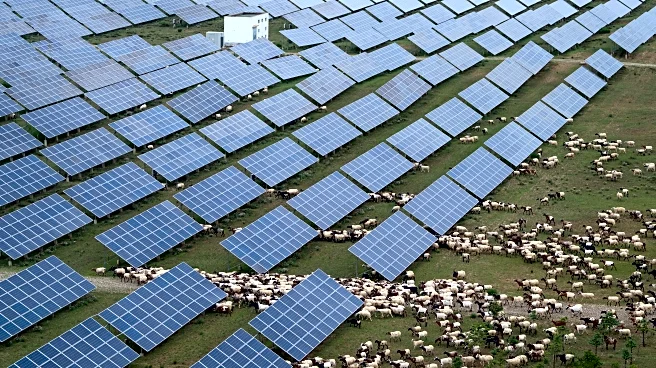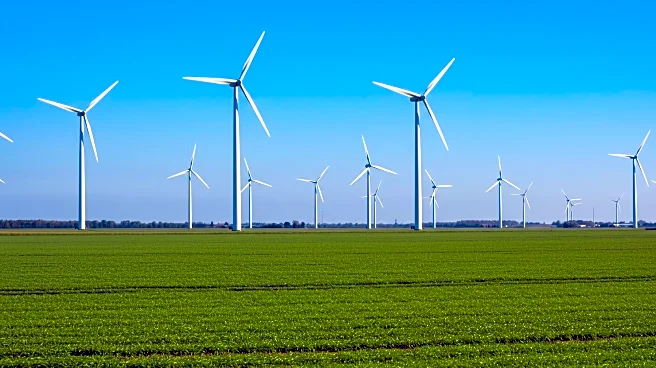What's Happening?
China is rapidly expanding its solar energy capacity, with plans to build the world's largest solar farm on the Tibetan plateau. This initiative is part of China's broader strategy to reduce carbon emissions and transition to clean energy sources. In the first half of 2025, China installed 212 gigawatts of solar capacity, surpassing the total capacity of the United States. The expansion is seen as a significant step towards China's goal of carbon neutrality by 2060, as solar energy is set to become the country's largest source of clean energy.
Why It's Important?
China's aggressive push towards solar energy represents a critical shift in global climate efforts. As the world's largest emitter of greenhouse gases, China's actions have significant implications for international climate change mitigation. The expansion of solar capacity not only helps reduce emissions but also demonstrates the potential for economic growth alongside environmental sustainability. However, challenges remain, such as the need to improve the electricity grid to accommodate variable renewable energy sources. China's progress could serve as a model for other nations seeking to balance economic development with environmental responsibility.
What's Next?
China's continued investment in solar energy will likely lead to further reductions in carbon emissions, contributing to global climate goals. The country will need to address grid management challenges to fully utilize its renewable energy capacity. Additionally, the success of China's solar initiatives may influence other countries to adopt similar strategies, potentially accelerating the global transition to clean energy. Ongoing developments in China's energy policy will be closely watched by international stakeholders and environmental advocates.
